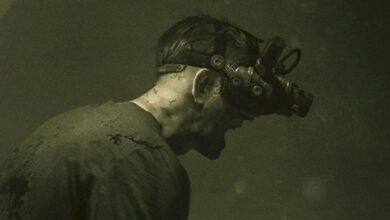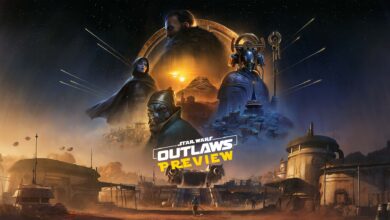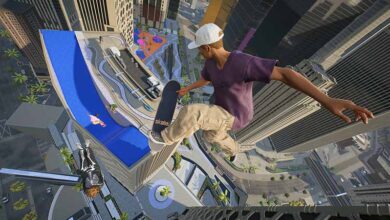Star Wars Jedi: Survivor Hands-On preview
Sponsored by EA Games, we attended a special presentation in Los Angeles, between March 27th and 30th. We had a chance to play Star Wars Jedi: Survivor hands-on for three hours. Now let’s take a look that what awaits us in the game and what has changed compared to the first game.
It will be worth the wait! Star Wars Jedi: Survivor
The Star Wars universe has been expanding with TV series and new movies recently, but it is not in the position it deserves in the video game world. This is why the Star Wars Jedi: Fallen Order game of Respawn Entertainment, an experienced game developer who adds extraordinary dynamics to the FPS genre such as Titanfall 2 and Apex Legends, which met with game enthusiasts in 2019, has an important place.
Fallen Order, which attracted great attention despite its shortcomings, gained a valuable place in the Star Wars universe and strengthened its position with the recently released novel Star Wars Jedi: Battle Scar.
On April 27, we played the new adventure for three hours. We won’t be able to tell everything we saw as EA Games didn’t want us to spoil the surprise on some the game, but there is still a lot to talk about! We played an unreleased demo version of the game. In other words, some of the details we will talk about may have changed / improved in the final-release version.
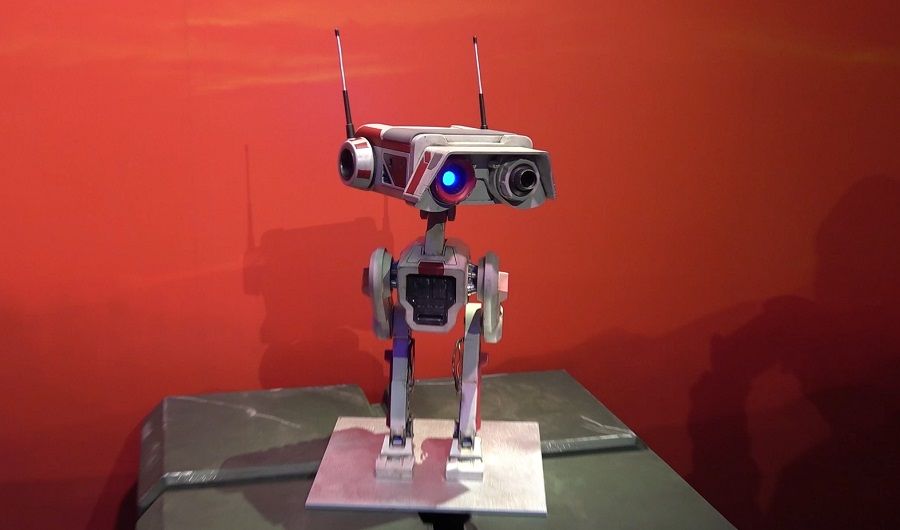
Star Wars Jedi: Survivor Hands On
We played Star Wars Jedi: Survivor with an Xbox controller, on a PC with AMD CPU & GPU, with all settings at 4K 30fps, without knowing the hardware components clearly. Let’s take note of this important information.
What is the story? Discover new planets…
Jedi Survivor takes place five years after the events. The scenario shifts in another direction when Cal’s spacecraft Mantis is attacked, crash-landed on the planet Koboh, which we will see for the first time in the Star Wars universe, and discovers that while he is exploring to repair it, he discoveries that will cause a breaking point in his journey and turn his adventure in a new direction.
In the prologue of the game, we encounter a gang called The Bedlam Raiders, which we will see for the first time in the Star Wars universe, haunting at the planet Koboh. The place of this gang in the story is important. As the story progresses, we will also see the return of some characters who were friends with Cal Kestis long ago. I can’t tell you more about the story, so as not to break the embargo and in fact not to upset you.

Star Wars Jedi Survivor is much stronger in terms of atmosphere compared to Fallen Order. The first game was Star Wars themed but for me it was a production that could not use the rich world of Star Wars enough. For example, the lack of NPCs, places where creatures of different races gather together, etc., was an important minus.
Of course, we saw various characters from the Star Wars universe, but only if the scenario allows. That’s why it felt soulless after a point. But Jedi Survivor made me feel like “Yes brother, I’m in a Star Wars adventure and I’m touching this universe”.
For example, we discover a town shortly after landing in Koboh. In this town called Rambler’s Reach, we have dialogues with NPCs, get information about what’s going on around, and even find side quests. Our sanctuary, our epicenter, is located in a bar in this town. In the first hours, I encountered characters who would offer me the richness and diversity I expected from Star Wars.

One of the biggest pros was that I was definitely faced with a spirited game. For example, you can invite the NPCs you encounter while visiting Koboh to the bar.
For example, let’s say a group of musicians; You can invite them to your place. Also, you can even change the music they are playing. You can also start a production business with the seeds you find in the open world and you can obtain some resources in this way.
The last thing I want to mention about the presentation is the dialogues. You know, in Star Wars movies, Stormtroopers or Battle Droids have dialogues that we can call “cheesy”. They captured that mood well in the first game. Star Wars Jedi: Survivor also continued the dialogues unique to this series, and in addition, instant dialogues between our enemies or between Cal and BD-1 are triggered according to the events of the war, which I think contributes to the reactivity of the characters in such games.
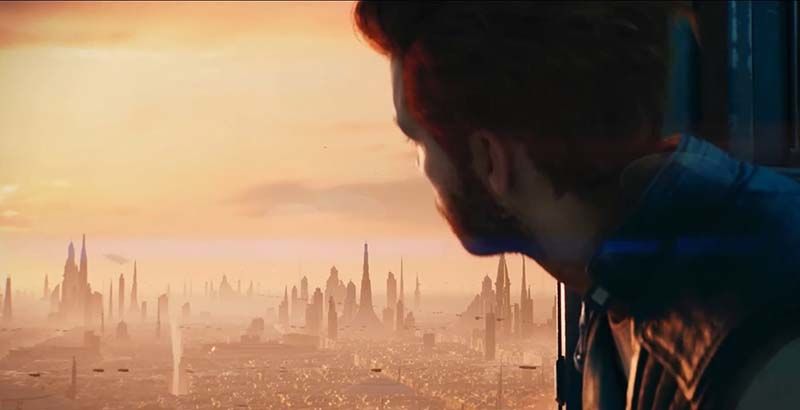
What’s in the Star Wars Jedi: Survivor open world?
Let’s move on to open world design. I don’t like open world games. As you know AAA, there is no escaping the open world games anymore. But the Fallen Order map design was just like Metroidvania with its level design and it attracted me despite its shortcomings.
The open world of Jedi Survivor interestingly managed to preserve the Metroidvania atmosphere. In the first three hours of the game, you do not feel like you are walking straight in every area you visit on the map, which grows gradually.
Star Wars Jedi Survivor: Cal Kestis
Cal Kestis’ parkour ability, his hook called Ascension Cable as a new fast travel method, you overcome obstacles by solving puzzles. By using the BD-1’s abilities, we are bouncing around.
In this way, Jedi Survivor gave me a wide world feel, not an open world. The developers have not removed the abilities we acquired in Fallen Order. Progress feels rich, as features such as double jumping, parkour on walls or using BD1 as a Zipline are available at the very beginning of the game.
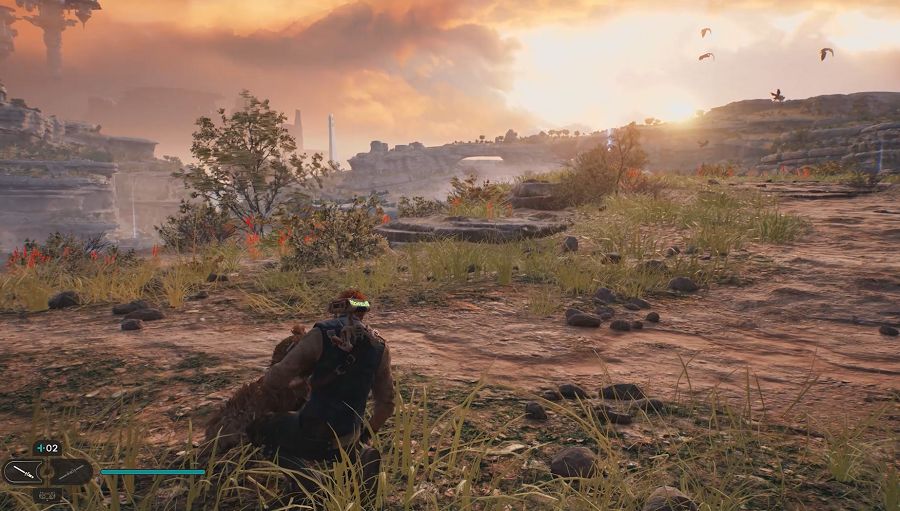
With the BD1’s sensor, we can mark points of interest on the map from an elevated location. In the first game, the 3D map was problematic in guiding, the new game has an improved map system. Of course, we can understand how functional it is by using it in the long run.
One of our new Force abilities is taming
We can turn creatures our mounts for traveling in the air and on land. The first hours of world exploration were very brisk and pleased me. I’m already wondering what kind of design choice they made in the next hours of the game, even on the planets we will travel to other than Koboh.
Let me briefly touch on the map exploration rewards and side quests. As I said we have a lot of conversations with NPCs. You get information about interesting topics in the region from them, listen to the rumors, and accordingly, you can pursue these quests instead of advancing directly in the main quest.
For example, in one of this missions, I came across a mini-boss. What I call Mini was actually a huge and tough friend!
We’re in the open world, I said we don’t have to go straight ahead. At the points you reach with various platform items and puzzles, you sometimes find energy sources that increase your life bar, gain new cosmetics, access skill points, or, similar to the Shrine logic in The Legend of Zelda: Breath of the Wild, by exploring special sections called Jedi Chamber and solving puzzles and you win prizes. Other areas waiting to be explored are areas called Force Tear.
You can unlock features that will affect your gameplay by using your platforming skills rather than puzzles. There was a world that made you feel full and directed you to do different things.
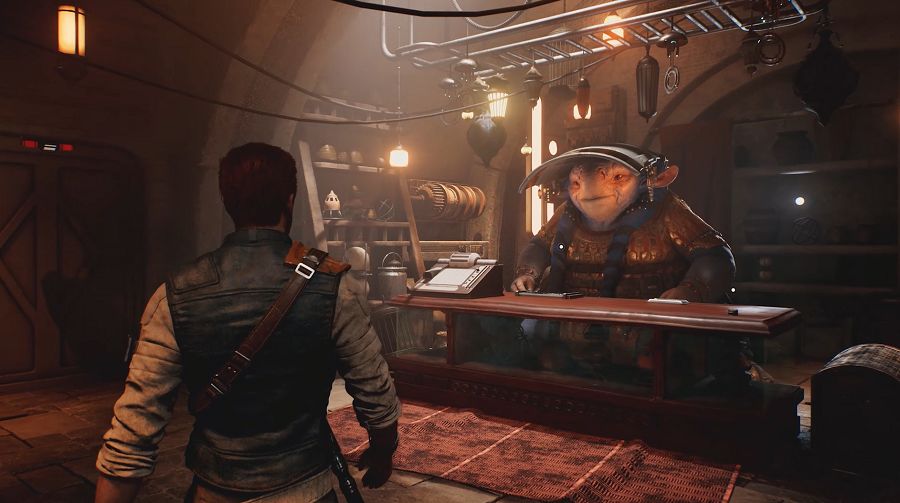
But I’d be lying if I said that I wasn’t a little disappointed when a beard that I could use for customization came out from a treasure chest I discovered. Already in the first game, this chest issue left a lot of enthusiasm in the crop.
Colorful ponchos were constantly coming out and it didn’t offer that much more. Is there more to Star Wars Jedi: Survivor? Of course, there are!
Customization Options
Let’s get into customization. In Fallen Order, we were able to make various customizations from lightsaber’s color to our clothes, from ponchos to our scout Mantis and BD-1. But these customizations were not deepened by the number of cosmetics and color options. Jedi Survivor contains much more options in this regard.
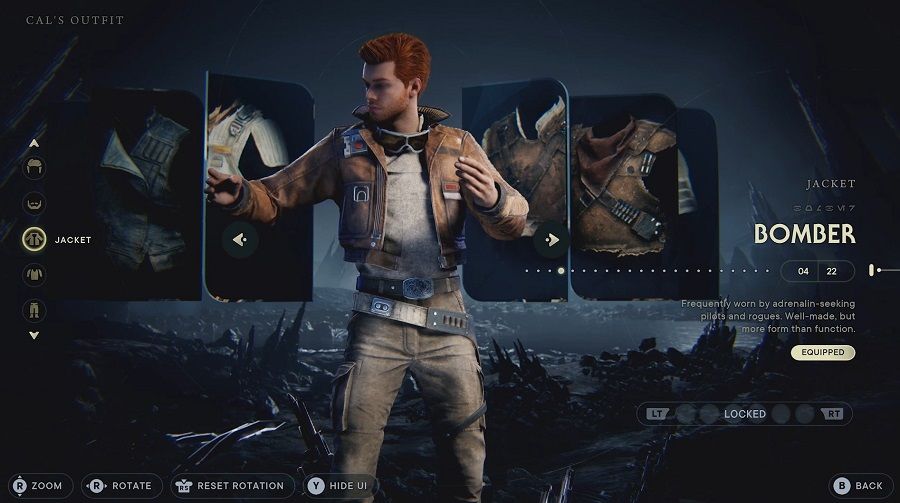
Cal Kestis customization is an important part of the game; Hair and beard styles, cool jackets and trousers, increased color options, everyone will be able to use Star Wars fashion in a different way and everyone will be able to make their own Kestis.
BD-1 is also not overlooked. Each accent is replaced with a different design, these accents are also colored. Considering that besides being a companion, it is positioned like a bag that we carry on us, the BD1’s detail in personalization is of course easily noticeable. The accessory change animations on the customization screen of the BD1 are also nice.
You can customize Lightsaber too. Lightsabers, which we can use as wands or in pairs, can be changed according to our preferences, both in terms of design and color, with a total of 7 different parts.
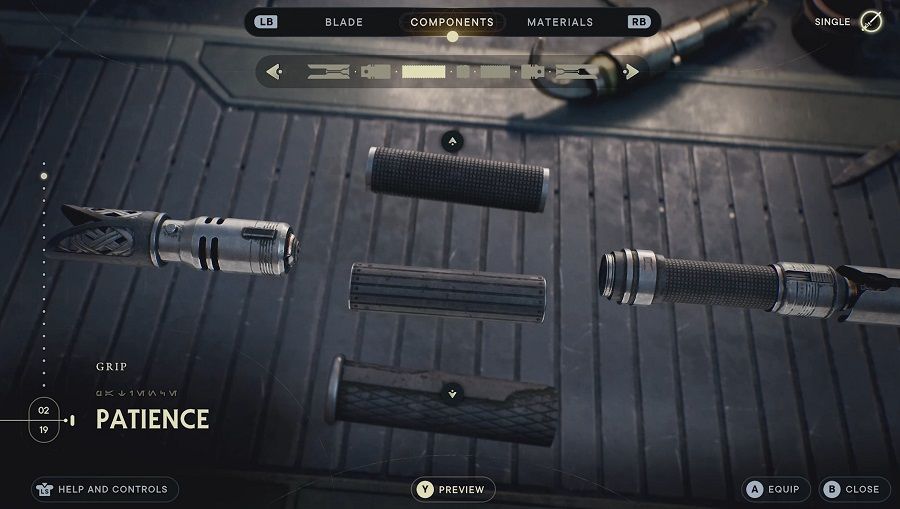
Graphics
Visually, I liked Jedi Survivor. I guess I’ll have to repeat it here: I played the game with all graphical settings at 4K 30 FPS on a PC with AMD architecture, but I don’t know the exact system specifications.
The developers clearly emphasized that we are in a wider world compared to Fallen Order, especially with the drawing distance. The quality of the surrounding textures, the dusting effect, the world illumination and the effect of the lights coming out of our iconic weapon Lightsaber stand out.
When we use Lightsaber, the image of burning the target and dropping flaming particles behind is also cool visual details that reflect the power of the weapon you use.
There is also an enrichment on the animations. Different finishing hits have been introduced for the stances I will explain it in the gameplay section. We used to encounter broken animations a lot in Star Wars Jedi: Fallen Order, those who played it will remember. Jedi Survivor gave me the impression of a more polished game with fewer bugs.
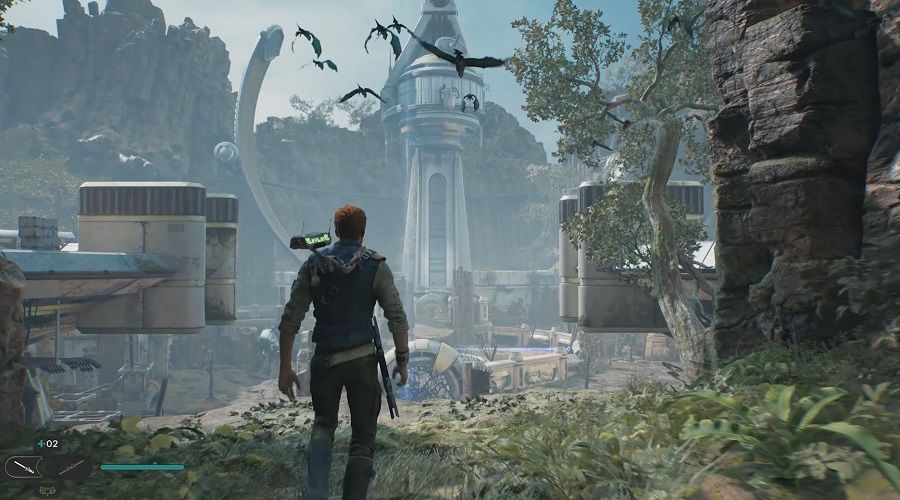
I sometimes experienced blurring of dense leafy trees at close range and fps drops while traveling in the open world. I hope that at the release of the game, maybe such shortcomings will be eliminated.
What has changed in Star Wars Jedi: Survivor gameplay?
Here is the most important part. Gameplay. The thing that makes me most happy in the gameplay part is the increase of the character movements. The control ability is better than ever.
In Star Wars Jedi: Fallen Order, the sloppyness and stagnation of character movement really bothered me. The swinging and grabbing movements were also not satisfying, it was bothering that Cal felt like he was getting out of my control. On top of that, the hitbox didn’t work well enough and it was taking away the feeling of collision.
In Jedi Survivor, I took the controls. I think it still needs work on it, but it has a much more satisfying, fuller feel of control than Fallen Order. Hitbox definitely works much more accurately too. So if there are people who are obsessed like me, they will be happy about it.
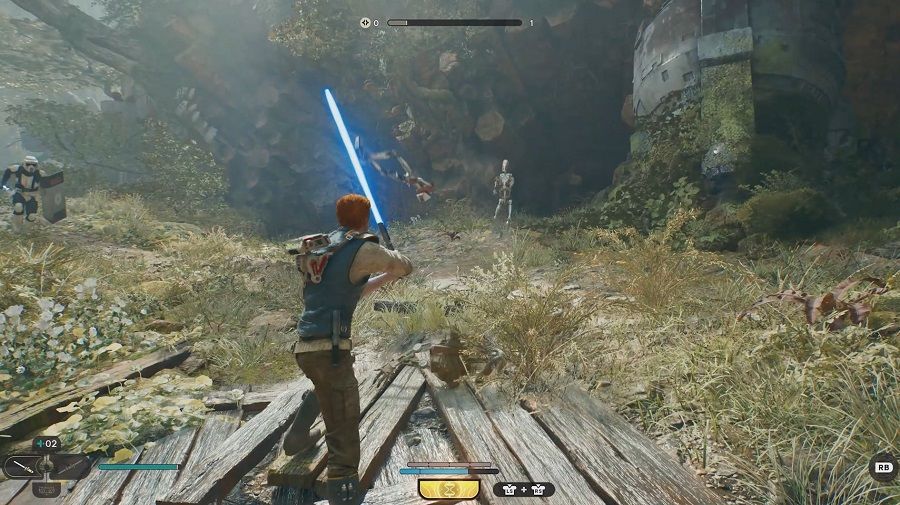
Additionally, the increased limb cutting details are added to the feeling of fighting. In Fallen Order, it was a detail that could only be applied to a small number of enemies and did not include humanoid enemies. So after a while we felt like we were beating Stormtroopers with sticks, not lightsabers.
In Star Wars Jedi: Survivor, especially with the finishing hits, the arm and leg breaks that we can see on every enemy now contribute to the feeling of the power of the lightsaber and level up the duels. For example, we cut off the hand of the monster named Mogu and the monster continues the fight without a hand. Of course, these limb ruptures are not real-time.
A noticeable change in the movement system; In Fallen Order, they assigned the grip to the lower left trigger on the controller. If we didn’t press the trigger when we jumped, the character would fall down. They removed it. Now the character clings directly. Even attacks to the enemy while holding on to the corners.
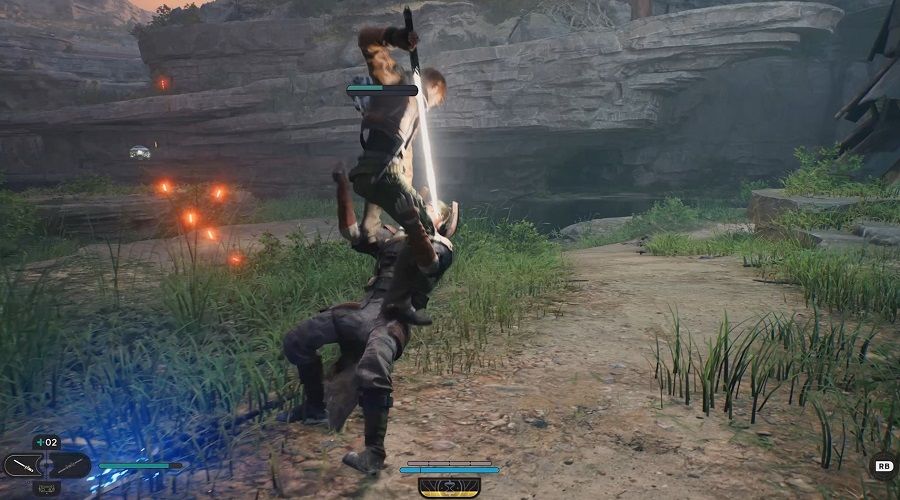
Jedi Survivor has 4 difficulty levels. I played the game on Jedi Knight difficulty, that is medium difficulty. The general progression method is as in Fallen Order; Again, like the bonfire points in the Souls series, meditation points are opened, and if you die during your progress, you may have to face whatever killed you again in order to get your experience points you dropped.
Well, let’s get to that stance thing!
Star Wars Jedi Survivor has three different stances:
- Standard one-handed use as in the first game
- Dualwield usage where we use two lightsabers
- The use of Double-bladed, which we turned into a wand by combining two lighsabers
Apart from these, there are two more stances that are not in the demo but appear to be closed in the skill tree: Crossguard and Blaster.
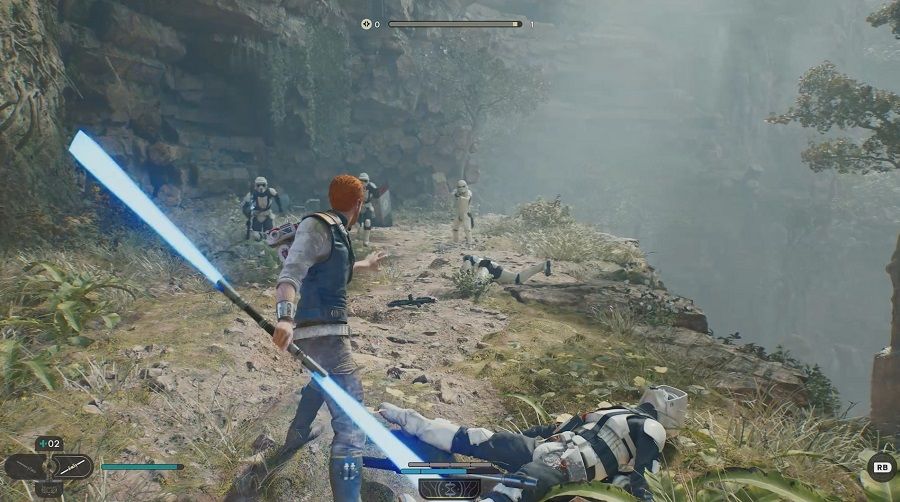
Jason De Hares, who undertook the combat design of the game, introduced these stances with a special show with all abilities open. I think they will clearly share their Crossguard and Blaster stances with Star Wars fans, maybe with a promotional video soon.
Each stance represents a different combat style. For example, Dualwield supports aggressive and fast gameplay, Double-blade works well against a slightly larger group of enemies. There are four different stats for each stance: power, speed, defense and distance. You can also make choices based on these.
The game gave me the right to carry two stances with me in the demo. If you wish, you can change your stance selections at meditation points and production tables. As a new feature at the meditation area, the training area where you can try different combos has been added.
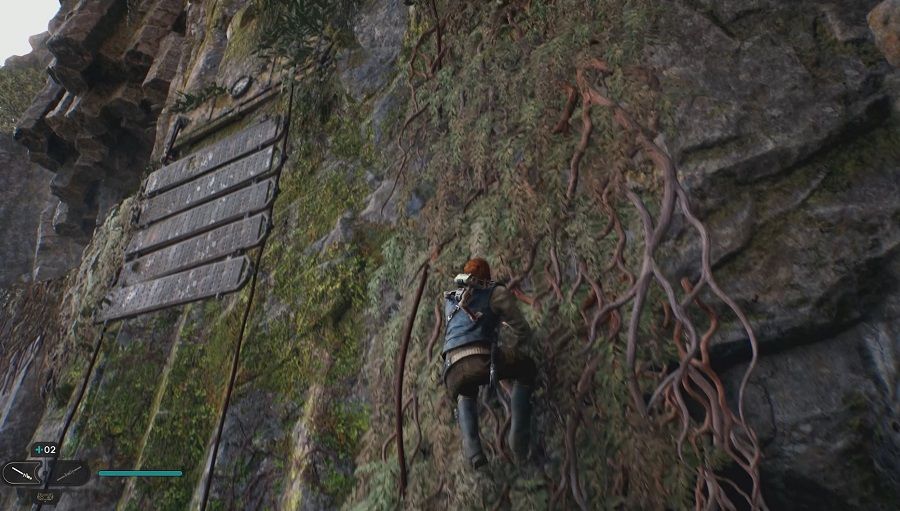
You can quickly switch between positions. I don’t know how accurate it would be to make an analogy, but you know in Devil May Cry, you could do combos by switching to different styles, and make different moves. Jedi Survivor gameplay offers this kind of fight.
So compared to the first game, I felt a bit more hack’n slash. The Stance incident seems to have carried the mission of deepening the battles and making it more fun, which is the purpose of existence in the game as a first impression.
However, trying for a long time and unlocking attractive abilities in the skill tree can give a clearer idea. I greatly enjoyed the value the stances add to the game. It’s especially fun to take on humanoid enemies, although there are sometimes weird pace drops, such as hunky foes standing unresponsive and waiting.
I don’t want to spoil by naming, but the variety of enemies satisfied me. One of the things I got tired of in Fallen Order was slaughtering a mountain goat or a regular Stormtrooper.
We’ll definitely be able to see more iconic Star Wars enemy types in Jedi Survivor. You may remember in the first game, we were getting the feature of auto-repelling incoming laser gun attacks. In the sequel, we start the battles with this feature directly.
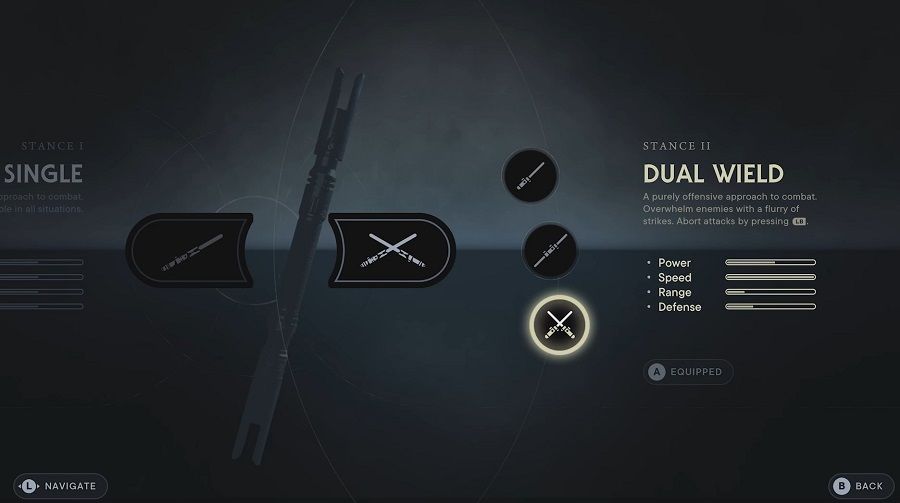
The last part I will tell about will be the skill tree and Force features. But let me point out; the developers didn’t want us to spoil the fun by giving too much information on this feature. That’s why I will give a general brief without too much detail about attack styles, stance abilities and names.
As in Star Wars Jedi: Fallen Order; There is a skill tree divided into three parts: Survival, Force and Lightsaber. But in the first game, these different abilities were distributed over a single tree. Now, with Jedi Survivor, each one is independently diversified and developed in its own branch.
Expanding the effect of pushing and pulling the enemy, taming animals under the Force branch; new attack styles for your favorite stance under Lightsaber; Under the title of Survival, you can make improvements and developments regarding your health status.
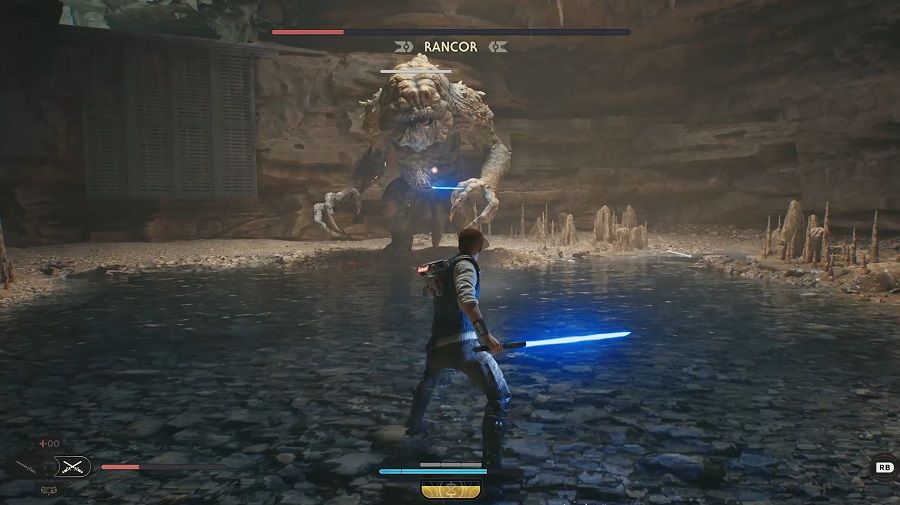
There is a new Force power added to the game: Force Confusion. Let’s call it clouding the mind of the enemy. Depending on your development, you can turn the enemy against each other for a while, or you can unleash the animals on the enemy by arousing the surrounding animals.
All the improvements I mentioned in Jedi Survivor really made Fallen Order look like a prototype game. Respawn has managed to take the game to the next level in every aspect and enriched the content satisfactorily. Star Wars Jedi: Survivor will be a Star Wars adventure worth waiting for!
Star Wars Jedi Survivor Gameplay Video
Long story short, while you are improving your skills, equipment and abilities you’ll:
- Explore an untamed Star Wars galaxy
- Unique biomes challenges and enemies
- Master new skills equipment
- Grown into a powerful Jedi Knight
You can pre order the game from EA’s official website.


